Stumble Stones in Trier
By Bronwen McShea - Mainz, Germany - 19 August 2012
During one of my final sightseeing excursions in Europe this summer (this being my last post from Germany, as I prepare to move home to the U.S.), I was eager to find a particular painting a friend had told me about -- an unusual painting of the Blessed Mother housed in the magnificent old cathedral at Trier in Germany's Mosel Valley.
I looked but did not find the painting. My brother Brendan, who was sightseeing with me that day and who had been to Trier before, thought there were fewer paintings up than he remembered and he wondered if the sought-for item was temporarily on display somewhere else, or out for cleaning. Disappointed with my unsuccessful treasure hunt, I focused on enjoying what was on display for me in the cathedral and in other churches around the city. I also toured and snapped photos of some of the Roman structures from Constantine's time, like the great Porta Negra.
Toward the end of the afternoon, I was feeling beaten down by the summer sun, but Brendan wanted to show me a few more places in Trier. We walked through the old Jewish quarter of the city, and we gaped momentarily at Karl Marx's birthplace at Brückenstraße 10, a rather delightfully bourgeois, Baroque structure that houses a museum devoted to its most famous inhabitant, and serves as a kind of shrine to the patron saint of atheist materialism and communism.
Quite by accident, we also passed by the old Jesuit church of Trier, now the seminary church for the Diocese of Trier, and the diocesan seminary itself -- a stately group of buildings, also Baroque, the main one of which, I learned afterwards, was used as a hospital during the First World War, since the number of seminarians had shrunken considerably from the nineteenth century and many rooms were vacant inside.
Given a longstanding scholarly interest I have in the history of the Jesuits and of Catholicism in Europe generally, seeing the old Jesuit church and the seminary building partly made up for my unsuccessful painting search. I snapped a few photos.
Just as we were about to leave these buildings, while pausing near the front gate of the seminary, Brendan noticed something: "Look down there, at those stones."
A few inches from our feet on the sidewalk, there were seven square stones, colored a bit differently than the other cobblestones, with words carved into them. I bent down to read. On the first one I saw, I read the name Johannes Schulz, and date of death August 19, 1942 -- exactly seventy years ago today, as I write. Place of death? Dachau.
"They all died in the camps," Brendan said of the men named on the stones. We wondered if they came from the Jewish neighborhood nearby, and why the stones were in front of the seminary. He added, "Take a picture of the stones and email it to me later. Let's find out more about them."
Later that evening, I Googled the names on the stones: Johannes Schulz, Joseph Bechtel, Wilhelm Caroli, Josef Zilliken, Jakob Ziegler, Johannes Ries, and Peter Schlicker. I found myself on the website of the diocesan seminary, the Bischöfliches Priesterseminar Trier, and a set of web pages there devoted to "the seven martyr priests of Trier."
The stones themselves, I learned, are the work of Berlin-born, Cologne-based artist Gunter Demnig, who has been installing such Stolpersteine or "stumbling blocks" throughout Germany, Austria, and other European countries since 1997 to commemorate the victims of National Socialism. So far, he has installed more than twenty-thousand Stolpersteine. The stones at the Priesterseminar Trier were laid on May 30, 2005. There are other such stones installed by Demnig in Trier, commemorating both Jewish and Gentile victims of Nazi terrors.
Although I only searched for a little while on the web, I could only find the stories of all seven men in German. Thinking I might translate the stories for my brother, I decided to share the stories with Pilgrim's readers, too. I imagine, like me, most have never heard of the seven martyr priests of Trier. Most of the information I convey here, in the rest of this post, comes straight from the diocesan website pages.
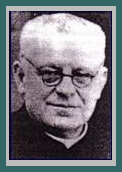 Johannes Schulz was born April 3, 1884, at Obervölklingen, a mining town near Saarbrücken. Educated first in Trier and Saarbrücken, he enrolled in the diocesan seminary in Trier. Ordained December 8, 1911 by Bishop Michael Felix Korum, his first assignment as a priest was at the parish of Holy Trinity at Lebach. During the First World War, he served as a military chaplain at Wadgessen in the district of Metz, where he gained a high reputation among the soldiers for his pastoral work. After the war, he was given his first assignment as Pastor, at Derlen in Saarland, where years later he came into conflict with the Nazis. He gained notoriety in the wider community at Derlen for opposing Hitler's regime, and especially the creation of the Gestapo.
Johannes Schulz was born April 3, 1884, at Obervölklingen, a mining town near Saarbrücken. Educated first in Trier and Saarbrücken, he enrolled in the diocesan seminary in Trier. Ordained December 8, 1911 by Bishop Michael Felix Korum, his first assignment as a priest was at the parish of Holy Trinity at Lebach. During the First World War, he served as a military chaplain at Wadgessen in the district of Metz, where he gained a high reputation among the soldiers for his pastoral work. After the war, he was given his first assignment as Pastor, at Derlen in Saarland, where years later he came into conflict with the Nazis. He gained notoriety in the wider community at Derlen for opposing Hitler's regime, and especially the creation of the Gestapo.
After Father Schulz was transferred to another parish at Nickenich, things came to a head when he and some friends -- including a neighboring parish priest named Joseph Zilliken, one of the other martyr priests of Trier -- ended up at the same restaurant one night as General Field Marshal Hermann Göring, founder of the Gestapo and commander of the German air force. The restaurant was named "Waldfrieden," which means "peace of the forest." When the other patrons of the restaurant stood up and gave Göring the obligatory Nazi salute, saying "Heil Hitler," the two priests refused to join in. They were arrested that same evening and on December 14, 1940, they were sent to the concentration camp at Dachau without a trial. Among the humiliations Father Schulz was made to suffer at Dachau, he had to write countless times on a chalk board -- like a punished school child -- "Jeder Deutsche ist verpflichtet, den Reichsmarschall zu grüßen" ("Every German must salute the Field Marshal"). Father Schulz died of starvation at Dachau during the summer of 1942, on August 19. His last words were, "I die for my flock, so that they may all go to Heaven.”
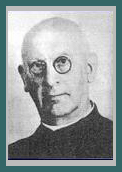 Father Schulz's friend, Joseph Zilliken, was born on September 17, 1872 in Mayen near Koblenz. He completed his early education in those cities and also in Prüm. He was a seminarian at Trier from 1894 to 1898, when he was ordained a priest by Bishop Korum on March 26. He served as a priest in several places -- Sulzbach in Saarland, Wolfersweiler near Freisen, and Thalexweiler, Ottweiler, and Prüm, where he came into conflict with the local Nazi district leader. In his homilies, he condemned a book by Alfred Rosenberg entitled The Myth of the Twentieth Century (1930), which, as an anti-Semitic and racist history of the world (arguing for example that God had created the races separately and unequally), had become a best-seller in Hitler's Germany. In 1936, the district leader of Prüm identified Father Zilliken as "a big obstacle" to the advance of National Socialism there. After his arrest with Father Schulz for refusing to give the Nazi salute to Göring, Father Zilliken was sent without trial to Koblenz, Buchenwald, Sachsenhausen-Oranienburg, and finally to Dachau in July 1940. A sympathetic witness at the time of his arrest reported that he went to his almost certain death "aggressively, like an old warhorse through a battlefield." The circumstances of his death at Dachau on October 3, 1942 are unknown.
Father Schulz's friend, Joseph Zilliken, was born on September 17, 1872 in Mayen near Koblenz. He completed his early education in those cities and also in Prüm. He was a seminarian at Trier from 1894 to 1898, when he was ordained a priest by Bishop Korum on March 26. He served as a priest in several places -- Sulzbach in Saarland, Wolfersweiler near Freisen, and Thalexweiler, Ottweiler, and Prüm, where he came into conflict with the local Nazi district leader. In his homilies, he condemned a book by Alfred Rosenberg entitled The Myth of the Twentieth Century (1930), which, as an anti-Semitic and racist history of the world (arguing for example that God had created the races separately and unequally), had become a best-seller in Hitler's Germany. In 1936, the district leader of Prüm identified Father Zilliken as "a big obstacle" to the advance of National Socialism there. After his arrest with Father Schulz for refusing to give the Nazi salute to Göring, Father Zilliken was sent without trial to Koblenz, Buchenwald, Sachsenhausen-Oranienburg, and finally to Dachau in July 1940. A sympathetic witness at the time of his arrest reported that he went to his almost certain death "aggressively, like an old warhorse through a battlefield." The circumstances of his death at Dachau on October 3, 1942 are unknown.
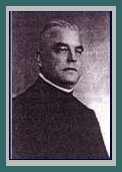 Another alumnus of the Bischöfliches Priesterseminar Trier who died at Dachau, Father Joseph Bechtel, hailed from a large family of winemakers in Kinheim along the Mosel River. One of nine children, he was born on July 18, 1879, and as a boy he attended the Royal Grammar School at Düsseldorf and later the prestigious Friedrich-Wilhelm Gymnasium in Trier before studying for the priesthood. He was ordained by Bishop Korum on March 31, 1906, and was assigned to the parish of St. Nicholas at Bad Kreuznach (a place I passed through often on trains this past year, to and from Mainz). He was eventually assigned as pastor of his own parish in Norath and after that at Niedermendig, where he came into open conflict with the Gestapo in 1936, although he had been monitored for suspicious, anti-Nazi activity since 1933.
Another alumnus of the Bischöfliches Priesterseminar Trier who died at Dachau, Father Joseph Bechtel, hailed from a large family of winemakers in Kinheim along the Mosel River. One of nine children, he was born on July 18, 1879, and as a boy he attended the Royal Grammar School at Düsseldorf and later the prestigious Friedrich-Wilhelm Gymnasium in Trier before studying for the priesthood. He was ordained by Bishop Korum on March 31, 1906, and was assigned to the parish of St. Nicholas at Bad Kreuznach (a place I passed through often on trains this past year, to and from Mainz). He was eventually assigned as pastor of his own parish in Norath and after that at Niedermendig, where he came into open conflict with the Gestapo in 1936, although he had been monitored for suspicious, anti-Nazi activity since 1933.
After refusing to display a Nazi flag and openly opposing the Third Reich's attempt to control the content of religious education in 1937, Father Bechtel was finally arrested when he defended before a Gestapo tribunal a younger priest at his parish, Peter Schlicker, who would not -- based on the Church's sacramental teaching -- dissolve the marriage of a terminally ill man in the parish whose wife wished to be free of him. Sent to Dachau in August 1941, Bechtel died there a year later on August 12. A fellow prisoner named Maurus Münch said that Father Bechtel's "greatness" lay in the fact that, for him, it was simply “a matter of course” one should come to the defense of others facing persecution. On the fifth anniversary of his death, a Benedictine priest named Burkhard Neunheuser described him as "a pure image of the Pastor bonus, the Good Shepherd" who "lays down his life for his sheep."
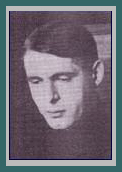 The young Father Schlicker was born in Saarbrücken-Malstatt on March 12, 1909, as one of ten children in a devout Catholic family. He was ordained by Bishop Korum after priestly formation at Trier on July 15, 1933. At his first assigned parish at Neuwieder, he immediately came under fire from local Nazi leaders, who accused him of sexual improprieties; he was found innocent in a local inquiry. A few years later as a chaplain at Niedermendig, he openly preached against National Socialism and was arrested on the pretense of "undue influence" over the dying man whose marriage he would not dissolve at the wishes of the divorce-seeking wife. He was arrested on September 1, 1941, and he accompanied Father Bechtel, who had defended him publicly, to Dachau. At the camp, he suffered typhoid and other illnesses, and although he lived to be liberated from the Nazis in March of 1945, he died the following month, on April 19, 1945, at a hospital far from home in Salzburg, Austria. A letter he wrote at Dachau on August 22, 1943 included the words, "To be God's servant, is to be a winner, and a king. Dachau has become the royal road for us. How beautiful it is, to work as a priest."
The young Father Schlicker was born in Saarbrücken-Malstatt on March 12, 1909, as one of ten children in a devout Catholic family. He was ordained by Bishop Korum after priestly formation at Trier on July 15, 1933. At his first assigned parish at Neuwieder, he immediately came under fire from local Nazi leaders, who accused him of sexual improprieties; he was found innocent in a local inquiry. A few years later as a chaplain at Niedermendig, he openly preached against National Socialism and was arrested on the pretense of "undue influence" over the dying man whose marriage he would not dissolve at the wishes of the divorce-seeking wife. He was arrested on September 1, 1941, and he accompanied Father Bechtel, who had defended him publicly, to Dachau. At the camp, he suffered typhoid and other illnesses, and although he lived to be liberated from the Nazis in March of 1945, he died the following month, on April 19, 1945, at a hospital far from home in Salzburg, Austria. A letter he wrote at Dachau on August 22, 1943 included the words, "To be God's servant, is to be a winner, and a king. Dachau has become the royal road for us. How beautiful it is, to work as a priest."
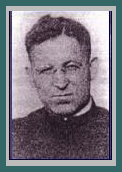 Johannes Ries was born at Elversberg in Saarland on July 9, 1887. As a boy, he attended school at St. Ingbert and Speyer. He enrolled at the seminary at Trier in 1909 and was ordained a priest on March 28, 1914. He served as a curate at Bernkastel Kues and in several other towns before he was assigned pastor of the church at Arzfeld in 1923. For a decade, he devoted special attention to promoting Catholic worker associations and to the alleviation of poverty. Then, in 1933, when his absence at a Nazi-led event was noticed, he fell subject to various charges by party members, ranging from insulting a local district official to moral indiscretions. After refusing to drape the flag of the Third Reich, his home was searched. He was arrested in June 1942 for having private writings in his possession that expressed doubt as to Germany's chances for victory in the war with Britain and its allies. In November, he was sent to Dachau, where he died on January 1, 1943. In a letter he was able to smuggle out to a friend after his arrest, he expressed hope that the cross he was carrying bore with it "some of the triumph of the Church."
Johannes Ries was born at Elversberg in Saarland on July 9, 1887. As a boy, he attended school at St. Ingbert and Speyer. He enrolled at the seminary at Trier in 1909 and was ordained a priest on March 28, 1914. He served as a curate at Bernkastel Kues and in several other towns before he was assigned pastor of the church at Arzfeld in 1923. For a decade, he devoted special attention to promoting Catholic worker associations and to the alleviation of poverty. Then, in 1933, when his absence at a Nazi-led event was noticed, he fell subject to various charges by party members, ranging from insulting a local district official to moral indiscretions. After refusing to drape the flag of the Third Reich, his home was searched. He was arrested in June 1942 for having private writings in his possession that expressed doubt as to Germany's chances for victory in the war with Britain and its allies. In November, he was sent to Dachau, where he died on January 1, 1943. In a letter he was able to smuggle out to a friend after his arrest, he expressed hope that the cross he was carrying bore with it "some of the triumph of the Church."
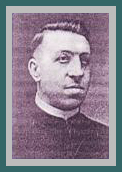 Jakob Ziegler was born on June 15, 1893 in Nalback along the Saar River. His studies for the priesthood at Trier were interrupted by a forty-one month stint as a soldier during the First World War. During the war, he served in France, Belgium, and Russia. As soon as he was able, he finished his studies at the seminary in Trier and was ordained a priest on August 13, 1922 by Bishop Franz Rudolph Bornewasser. After serving as a curate in two parishes in Trier, he was appointed pastor of a church in Langsur Ziegler in 1931. In 1933, a local Nazi party official began to hound Father Ziegler in his ministry, dissolving the local Catholic Young Man's Association and accusing the priest and other clerics in the area of sympathizing with communists.
Jakob Ziegler was born on June 15, 1893 in Nalback along the Saar River. His studies for the priesthood at Trier were interrupted by a forty-one month stint as a soldier during the First World War. During the war, he served in France, Belgium, and Russia. As soon as he was able, he finished his studies at the seminary in Trier and was ordained a priest on August 13, 1922 by Bishop Franz Rudolph Bornewasser. After serving as a curate in two parishes in Trier, he was appointed pastor of a church in Langsur Ziegler in 1931. In 1933, a local Nazi party official began to hound Father Ziegler in his ministry, dissolving the local Catholic Young Man's Association and accusing the priest and other clerics in the area of sympathizing with communists.
After spearheading a successful popular mission in Langsur in 1936, the Gestapo confiscated Ziegler's personal belongings and found a folder full of private writings against the Nazi party. In 1937, he was reprimanded for distributing Catholic catechisms to local families. The Gestapo banished him from Trier the following year. In July 1941, while ministering to a parish at Cochem-Cond, his home was raided and his personal papers were found by the Gestapo to contain "confessional writings of hateful content." He, too, was sent to Dachau, where he continued to provide the sacraments, illegally, to Catholics there. He died on December 5, 1944.
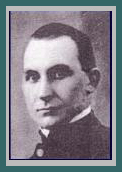 Wilhelm Caroli, born on July 4, 1895 in Saarlouis in Saarland, was, like Father Ziegler, drafted into military service during the First World War while in the middle of his studies for the priesthood at Trier. He worked as a medic on the Eastern Front and was able to return to his studies before the end of the war. Ordained a deacon in Trier in 1920, he was sent to the Diocese of Speyer for priestly ordination, which he received from Bishop Ludwig Sebastien on March 12, 1921. He worked as a curate in Ludwigshafen (another place I passed through often on trains this year) and later as a pastor in Rheingönheim, where he became active with the local labor movement. In 1933, he offended local Nazi leaders when he referred to Hitler's anti-Semitism as "very cruel nonsense" in a small Catholic newsletter. He was accused of abusing his position as a pastor.
Wilhelm Caroli, born on July 4, 1895 in Saarlouis in Saarland, was, like Father Ziegler, drafted into military service during the First World War while in the middle of his studies for the priesthood at Trier. He worked as a medic on the Eastern Front and was able to return to his studies before the end of the war. Ordained a deacon in Trier in 1920, he was sent to the Diocese of Speyer for priestly ordination, which he received from Bishop Ludwig Sebastien on March 12, 1921. He worked as a curate in Ludwigshafen (another place I passed through often on trains this year) and later as a pastor in Rheingönheim, where he became active with the local labor movement. In 1933, he offended local Nazi leaders when he referred to Hitler's anti-Semitism as "very cruel nonsense" in a small Catholic newsletter. He was accused of abusing his position as a pastor.
During the battles over religious education in Germany in the late 1930s, Caroli and other priests suffered brutal physical attacks. Records in the Diocese of Speyer confirm that on the night of June 26, 1933, Father Caroli was "beaten with rubber truncheons to the point of losing consciousness" by a band of Nazi sympathizers. Not long after, his parish church was raided and the Nazi flag draped from its tower; on another occasion, on July 8, 1935, the church at Rheingönheim was raided by anti-Catholic, pro-Nazi rioters who smashed the confessional box, tore the linens on the altar, and smashed windows and furniture. The local riot squad at Ludwigshafen refused to intervene.
In the summer of 1937, Caroli was sentenced to eight months in prison for refusing to hang the Nazi flag at his church. After his release, he returned to Trier. After preaching a sermon against euthanasia in October 1941, he was arrested on the charge of "abuse of the pulpit" and was sent to Koblenz and then to Dachau. He died of exhaustion and starvation on August 23, 1942.
After literally stumbling upon the stories of these seven men of Trier, I learned a lesson -- again, as I need to remind myself now and again -- that it's usually just when I am looking or waiting for something very specific, like the painting I didn’t find, that God, and His saints, have a way of finding me, of having me stumble over unexpected, bracingly good things worthy of serious attention.
The seven martyr priests of Trier reminded me, too, that there are so many more stories of human courage around us than we know -- in the recent past and the present as well as in the distant "heroic" ages of the Church – stories of standing up for the truth, for justice, and for love of God and for those who bear the image of God. When we stumble upon these stories -- when courageous souls call out to us -- it is good to reflect on them, tell them to our families and friends, and remember them.